Criteria (ii) (iv) (vi) UNESCO World Heritage Site inscription 2013 | Type Cultural Reference 175 | |
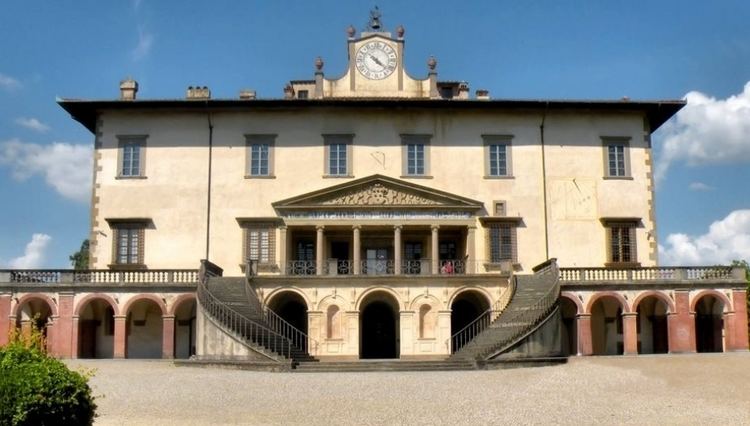 | ||
UNESCO region Europe and North America Similar Villa La Petraia, Villa di Castello, Villa Medicea, Villa Medicea di Cerreto G, Villa Medici at Careggi | ||
Vinci medici villas and painted statues vinci jacob earl
The Medici villas are a series of rural building complexes in Tuscany which were owned by members of the Medici family between the 15th century and the 17th century. The villas served several functions: they were the country palaces of the Medici, scattered over the territory that they ruled, demonstrating their power and wealth. They were also recreational resorts for the leisure and pleasure of their owners; and, more prosaically, they were the centre of agricultural activities on the surrounding estates. In 2013, the Medici villas were added to UNESCO's World Heritage list.
Contents
- Vinci medici villas and painted statues vinci jacob earl
- Terrakottakrukor medici villas toscana cadabra design
- History
- Villas and gardens on the UNESCO list
- Major villas
- Minor villas
- References
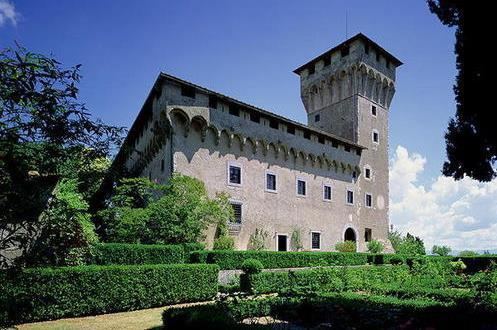
Terrakottakrukor medici villas toscana cadabra design
History
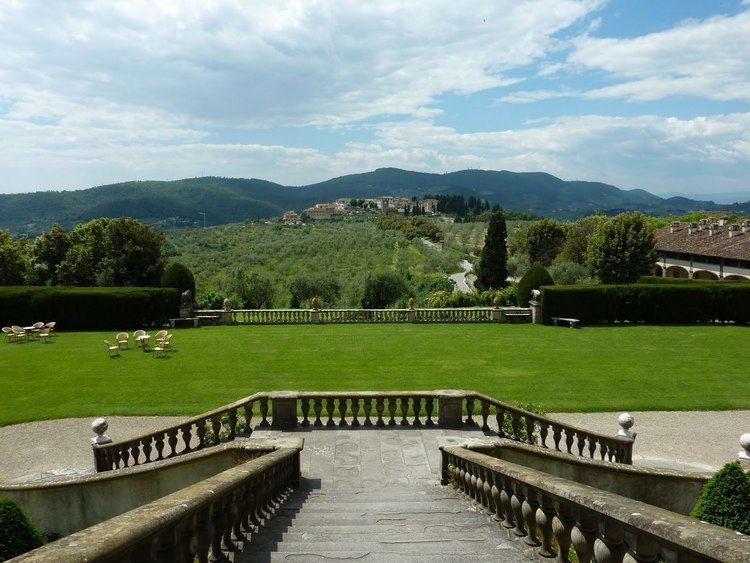
The first Medici villas were the Villa del Trebbio and that at Cafaggiolo, both strong fortified houses built in the 14th century in the Mugello region, the original home of the Medici family. In the 15th century, Cosimo de' Medici built villas designed by Michelozzo at Careggi and Fiesole, still quite severe buildings, but with additional recreational spaces: courtyards, balconies, and gardens. Lorenzo de' Medici spent long periods at the Villa di Careggi. Gradually, Florence became surrounded by a collection of Medici villas, with others in more distant parts of the Grand Duchy of Tuscany. By the end of the 16th century, there were at least 16 major estates, with at least another 11 of secondary interest (mainly agricultural or owned by the Medici family for a short time), together with a constellation of farms and hunting lodges throughout Tuscany. Giusto Utens painted a series of lunettes depicting the main Medici villas in the 17th century, which are now held by the Museo di Firenze com'era.
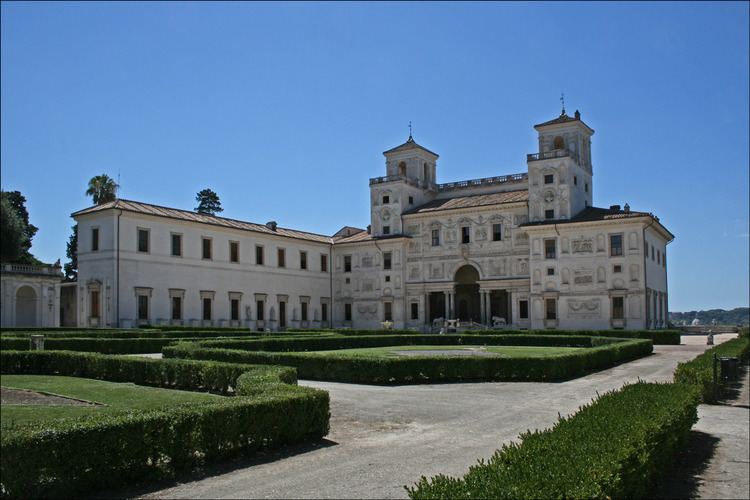
The last Medici villas were the Villa di Montevettolini and the Villa di Artimino, bought in 1595/6 by Ferdinando I while he was expanding the Villa di Castello, Villa La Petraia and Villa dell'Ambrogiana.
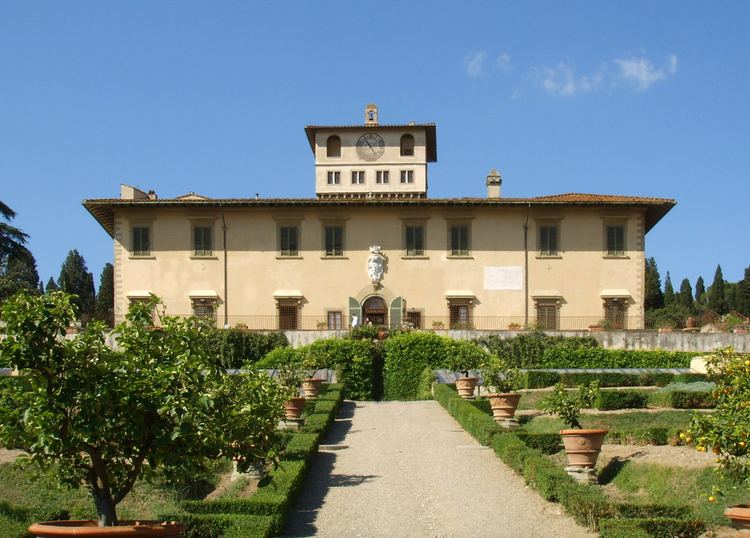
The later villas are outstanding examples of Renaissance and Baroque architecture, and were often accompanied by gardens. The garden at the Villa di Castello, created for Cosimo I de' Medici, Grand Duke of Tuscany, was the first in Italy by Niccolò Tribolo, who later designed the Boboli Gardens for Cosimo's Florentine new residence, the Palazzo Pitti.
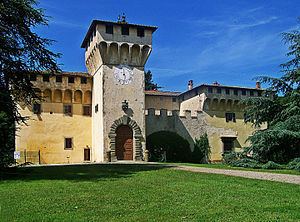
Each significant member of the Medici family owned an estate. The Duke moved from one house to house. When in residence, the villa became a microcosm of the Medici court. For hunting, he could visit the Villa del Trebbio, Villa di Cafaggiolo or Villa di Pratolino; reside at the Villa dell'Ambrogiana in the spring; and move to the Villa di Artimino, to while away the summer in its cooler elevated position.
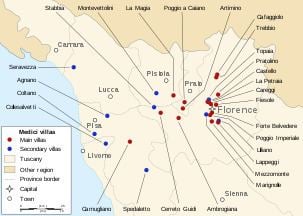
After the death of Gian Gastone de' Medici in 1738, the Grand Duchy of Tuscany and the Medici's assets, including their villas, were acquired by Francis, Duke of Lorraine (later Holy Roman Emperor). Today, some of the Medici villas are museums; others are occupied by institutions, and a few are owned privately, and often hired privately or used to stage public events.
In 2006, the Italian government submitted the Medici villas for designation by UNESCO as a World Heritage Site. At the 37th UNESCO World Heritage Committee in 2013 at Phnom Penh, "Medici Villas and Gardens in Tuscany" was added to the World Heritage list.
Villas and gardens on the UNESCO list
Twelve villas and two gardens comprise the UNESCO World Heritage Site:
Major villas
- Villa del Trebbio (mid-14th century - 1738)
- Villa di Cafaggiolo (mid-14th century - 1738)
- Villa di Careggi (1417 - 1738)
- Villa Medici in Fiesole (1450–1671)
- Villa di Poggio a Caiano (1470–1738)
- Villa di Castello (1480–1738)
- Villa di Mezzomonte (1480–1482, 1629–1644)
- Villa La Petraia (first half of the 16th century - 1738)
- Villa di Camugliano (c.1530 - 1615)
- Villa di Cerreto Guidi (1555–1738)
- Villa del Poggio Imperiale (1565–1738)
- Villa di Pratolino (1568–1738)
- Villa di Lappeggi (1569–1738)
- Villa dell'Ambrogiana (1574–1738)
- Villa La Magia (1583–1738)
- Villa di Artimino (1596–1738)
Minor villas
- Villa di Collesalvetti (1464–1738)
- Villa di Agnano (1486–1498)
- Villa di Arena Metato (c.1563 - 1738)
- Villa di Spedaletto (1486–1492)
- Villa di Stabbia (1548–1738)
- Villa della Topaia (c.1550 - 1738)
- Villa di Seravezza (1560–1738)
- Villa di Marignolle (1560–1621)
- Villa di Lilliano (1584–1738)
- Villa di Coltano (1586–1738)
- Villa di Montevettolini (c.1595 - 1738)
In addition to their country villas, the Medici also occupied the following buildings in Florence:
and the Villa Medici in Rome.
